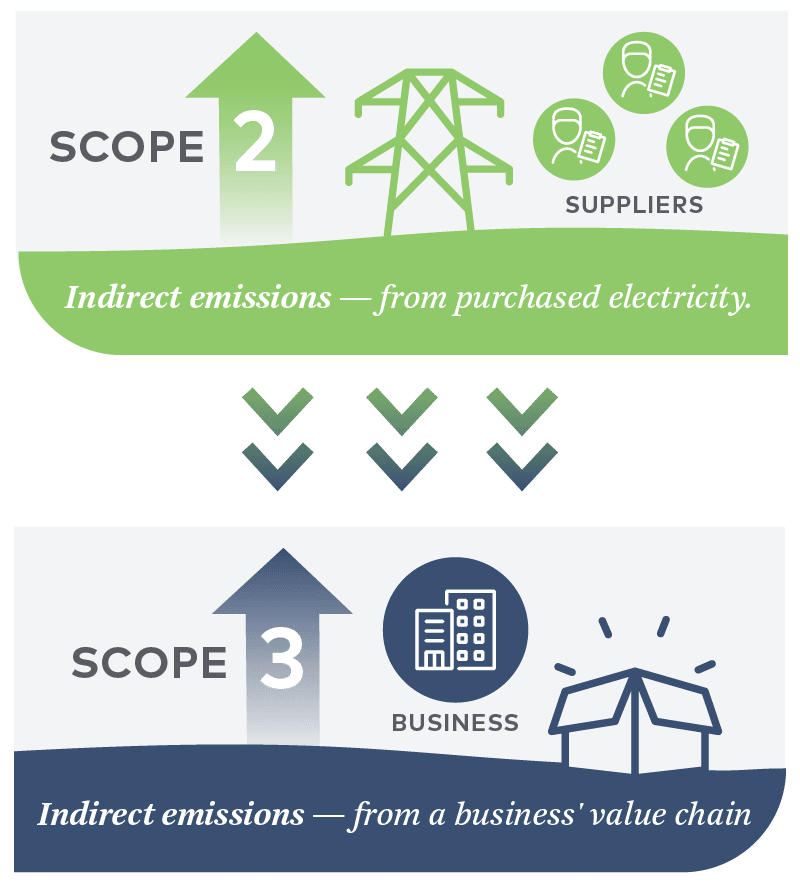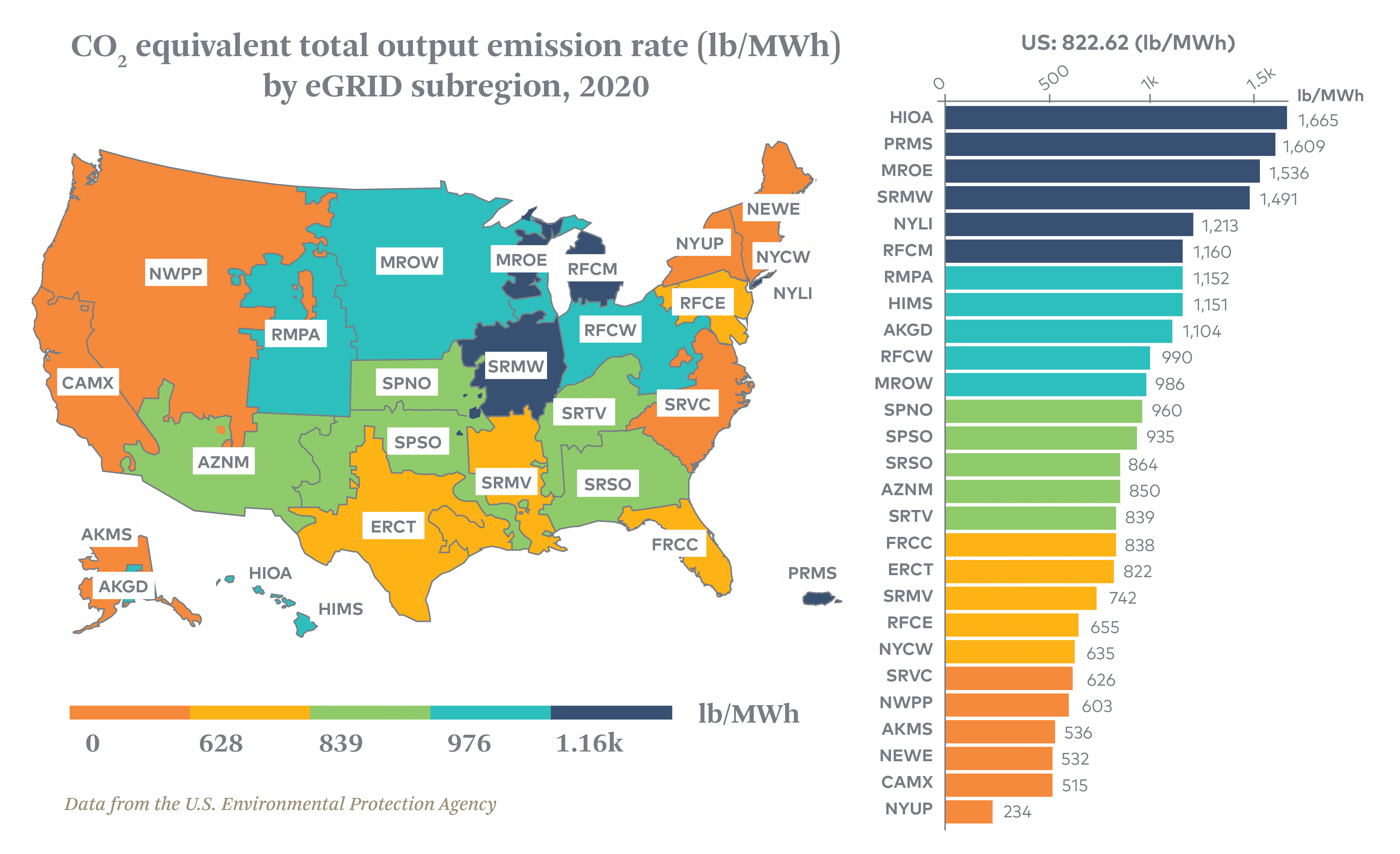Maximizing the carbon displacement of your renewable energy project helps ensure that it generates the largest climate benefit possible. As more companies mobilize to take urgent climate action, carbon displacement value has become a bigger priority for many organizations. Given the heightened interest around this topic, we put together a three-part blog series that outlines strategies that organizations can take to maximize the carbon displacement of their power purchase agreements (PPAs).
In part one, we looked into choosing your market and discussed how different renewable energy technologies intersect with the carbon intensity of a market over the hours they’re generating. In part two, we explored how alternative technologies, like battery storage, can be used for carbon arbitrage.
In this third and final installment of our series, we’ll examine how organizations can expand their carbon displacement impact by incorporating renewables into their value chains, while also taking another look at an earlier strategy.
Reducing scope 3 electricity emissions
For most companies, scope 3 emissions—those emitted up and down the value chain—sum to a total far greater than their scope 1 (direct) and 2 (indirect, electricity) emissions. For this reason, after your scope 1 and 2 plans are set in motion, you’ll want to turn your attention to your value chain. Many companies already on this journey are finding that reducing value chain electricity use and increasing renewables are some of the most effective tools to reduce scope 3 emissions.
The proportion of a company’s scope 3 emissions that derive from value chain electricity use will differ widely from company to company, so a good first step will be to determine whether, and where, electricity represents a large emission source in your value chain. If you have value chain emissions data available, you can review your suppliers’ scope 2 emissions as well as downstream electricity use. If this data is not available, you can screen for it using a scope 3 screening tool to identify likely electricity hot spots. Nearly all manufacturing processes are electricity-heavy, as are cloud-based data services; these can be found by breaking down “purchased goods and services” emissions into finer categories, or from your own knowledge of the types of activities that occur along your value chain.


With even fairly basic data, you can take an important step in making the most of your supplier engagement processes: factor in carbon displacement potential when choosing where to focus your efforts. Specifically, identify groups or types of value chain partners that:
- Use a lot of electricity
- Are located in countries or regions that have carbon-intensive grids
- Have choices in how their electricity is supplied
Focusing on these types of partners creates a fertile environment for rapid emission reductions.
Designing your strategy
In parallel, your organization will need to determine how best to work with its partners to move toward cleaner energy supplies. Some approaches focus on education, data reporting, and recognition for progress; others focus on requirements and deadlines; and some companies choose to provide direct financial assistance or make purchases of renewable energy on behalf of value chain partners. In any case, by focusing your work with value chain partners in places where companies have renewable energy procurement options, you may be able to ask more of these partners than with a broad-based approach.
It’s helpful to remember here that the renewable energy implementation tactics available to value chain partners are largely the same tactics you’ve likely had to study for your own load. The concerns, risks, advantages, and disadvantages of the various choices will not be surprising. And, as renewable energy procurement demand has grown around the world, the ecosystem of transaction structures and knowledgeable supporting resources has similarly grown.
By working specifically on electricity, you can design your engagement strategy to be appropriate to time, place, and your relationship to your value chain partners. For example, you might choose a two-step strategy:
- First, support suppliers who measure and report their electricity use with a short-term purchase of high-quality certificates made on their behalf.
- Then, with this data available, identify more impactful strategies for your suppliers to implement, given your relationships in the region.
Can you combine your load with that of your suppliers to inspire custom renewable energy offers from energy providers? Can a PPA serve several supplier loads? Can you work across your industry to achieve economies of scale?
There is no universally accepted wisdom on how to approach renewable supply within your plan to address scope 3 emissions. Your organization will need to weigh its goals, business needs, and value chain complexities to determine the best approach.
Maximizing carbon displacement with renewables in your scope 3
Working across your value chain can be complex. For upstream emissions, most companies have found they need to help facilitate credible, standards-compliant electricity use and emissions reporting by their suppliers. You’ll need this to create an effective action strategy for your engagement, as well as for your own emissions reporting.
If you have value chain partners in locations with impactful energy supply choices, you’ll have the opportunity to sculpt a program that can maximize carbon displacement. For example, you can follow our recommendations in part one of this series by recommending, choosing, or requiring that energy supplies originate from a more carbon intensive location and/or from a renewable energy technology that operates at times of day that correlate with the most carbon intensive hours in that location.

If you choose to encourage or facilitate PPAs, you’ll need to incorporate education on carbon displacement value into your supplier engagement plan. Let your suppliers know why carbon displacement value matters and provide tools and suggestions. You can also deliver educational sessions that help explain the relationship between renewable energy technologies and time of day, and how emerging technology options, like battery storage, can be incorporated.
Maximizing your carbon displacement to minimize your environmental impact
There are plenty of ways to maximize the carbon displacement value of PPAs that apply to both scope 2 and 3 electricity emissions. These actions will put your organization ahead of the curve and ensure that you’re taking the most impactful steps to minimize your environmental impact.
If you have any follow-up questions or would like to discuss your organization’s renewable energy procurement strategy, please feel free to contact us.

